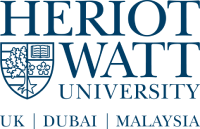Prof D Townsend, Dr SJ Greaves
No more applications being accepted
Funded PhD Project (European/UK Students Only)
About the Project
Femtosecond lasers with pulse durations comparable to the “ultrafast” timescales of molecular motion have become a powerful tool for studying the dynamics of energy redistribution following ultraviolet (UV) absorption in real time. Investigating such processes using pump-probe spectroscopic techniques is critical for understanding photo-protection mechanisms that take place in, for example, DNA and the melanin pigmentation system, and protect the body from the potentially damaging effects of UV light. They are also of great importance in many other classes of molecular system, including photochromic polymers, light harvesting complexes, sunscreens, molecules relevant to atmospheric/interstellar photochemistry and drugs for use in photodynamic therapy (PDT). Of these, it is the subject of PDT (i.e. the highly-targeted, light-initiated release of active agents for the treatment of conditions such as skin cancer) that will form a main theme of this specific project.
The research will make use of a new experimental set up at Heriot-Watt University to study the condensed phase excited state dynamics of several systematically varied porphyrin species using ultrafast transient absorption spectroscopy. Porphyrins are often used as photosensitizers in the initial step of the PDT process as they readily undergo triplet state formation via intersystem crossing following photoexcitation. The triplet state photosensitizer then interacts with triplet molecular oxygen to yield singlet molecular oxygen, which is the active species that can be used to attack cancer cells in the body. The project will focus on several key factors affecting the overall efficiency of this process including (i) the effects of different metal centres within the porphyrin structure, (ii) the influence of concentration and aggregation, and (iii) the role of pH. The work is well suited to those with an interest in molecular spectroscopy, non-linear optics and lasers. Some software development for data acquisition/analysis may also be required and there will be opportunities to gain proficiency with commercial quantum chemistry computational platforms such as Gaussian.

 Continue with Facebook
Continue with Facebook

